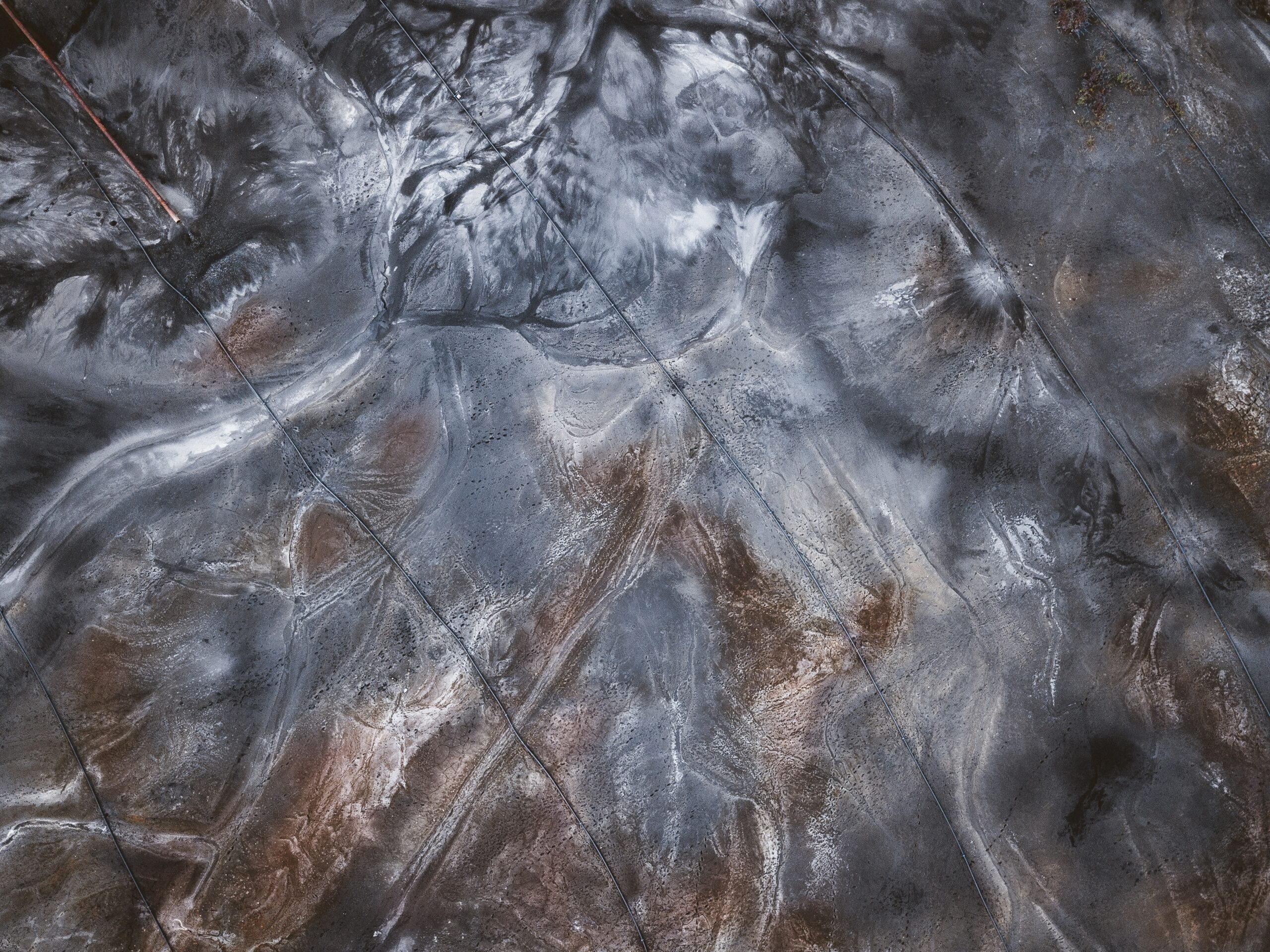Are you facing the issue of sediment and silt infiltrating your well water? If so, worry no more! In this article, you will find effective and friendly tips on how to tackle this common problem head-on. Discover the essential techniques that will enable you to maintain clean and clear well water, ensuring that your daily hydration remains pure and refreshing. So, let’s dive into the simple yet effective methods that will help you bid farewell to sediment and silt in your well water for good!
Understanding Sediment and Silt in Well Water
What is sediment and silt?
Sediment and silt are common impurities found in well water. Sediment refers to solid particles that settle at the bottom of a container or accumulate in pipes and fixtures. Silt, on the other hand, is a specific type of sediment that consists of fine particles between the sizes of sand and clay.
Causes of sediment and silt in well water
There are several factors that can contribute to the presence of sediment and silt in well water. One of the main causes is the natural erosion of rock and soil surrounding the well. Rainwater and snowmelt can carry these particles into the well, leading to sedimentation. Construction activities, agricultural runoff, and nearby excavation can also introduce sediment and silt into the water source.
Consequences of sediment and silt in well water
The presence of sediment and silt in well water can have various consequences. Firstly, it can affect the taste and odor of the water, making it unpleasant to consume. Sediment can also clog pipes, fixtures, and water treatment equipment, reducing their efficiency and potentially causing damage. Additionally, the accumulation of sediment can result in reduced water flow and pressure, impacting the overall performance of the well system.
Testing and Identifying Sediment and Silt in Well Water
Performing a visual inspection
One of the initial steps in identifying sediment and silt in well water is through visual inspection. Examine the water for any visible particles or cloudiness. Fill a clear glass and hold it against a white background to get a better view of the water quality. Look for any discoloration or floating particles that may indicate the presence of sediment or silt.
Water testing techniques
To further evaluate the levels of sediment and silt in well water, water testing techniques can be employed. There are various water testing kits available that allow individuals to test for specific impurities, including sediment and silt. These kits typically involve collecting a water sample and following the instructions provided to analyze the sample for impurities. Alternatively, professional water testing laboratories can conduct comprehensive analyses to determine the specific levels and types of sediment in the water.
Identifying the source of sediment and silt
Identifying the source of sediment and silt is crucial in addressing the issue effectively. If the sediment is consistently present and visible, it is likely coming from the well itself. However, if the sediment only appears during specific activities, such as after heavy rainfall or nearby construction, it may indicate external contamination. By identifying the source, appropriate measures can be taken to prevent further sedimentation and siltation.

Preventing Sediment and Silt in Well Water
Proper well location and construction
One of the key prevention strategies for sediment and silt in well water is ensuring proper well location and construction. Wells should be located away from potential sources of sediment and silt, such as septic systems, livestock areas, and areas prone to flooding. Additionally, proper well construction techniques, including the installation of a well screen and gravel pack, can help minimize the entry of sediment into the well.
Maintaining a safe distance from potential contaminants
To prevent sediment and silt from entering the well, it is crucial to maintain a safe distance from potential contaminants. Keep septic systems, chemicals, fertilizers, and storage areas at a significant distance from the well to minimize the risk of contamination. Implementing proper land use practices, such as avoiding excessive soil disturbance, can also help prevent soil erosion and reduce the likelihood of sedimentation.
Regular well maintenance and inspections
Regular well maintenance and inspections are essential in preventing sediment and silt in well water. Conducting routine checks on the well system, including the casing, well cap, and seals, can help identify any potential areas of concern. Additionally, regular cleaning of the well and its components can remove accumulated sediment and reduce the risk of clogging and reduced water flow.
Removing Sediment and Silt in Well Water
Using a sediment filter
A common method for removing sediment and silt in well water is by using a sediment filter. Sediment filters are designed to capture and remove particles of various sizes, including silt and larger sediment particles. These filters are typically installed at the point of entry or specific points in the plumbing system, ensuring that the water throughout the house is free from sediment. Regular maintenance and filter replacement are important to ensure optimal performance.
Using a settling basin or sedimentation tank
Another option for removing sediment and silt is the use of a settling basin or sedimentation tank. These systems allow the water to sit and settle, allowing sediment and silt to settle at the bottom of the tank. The clearer water is then drawn off and used. Periodic cleaning and removal of settled sediment are necessary to maintain the efficiency of these systems.
Implementing a sand separator or centrifugal filter
In cases where sediment and silt levels are high, implementing a sand separator or centrifugal filter can be effective. These devices use centrifugal force to separate the sediment from the water. As the water spins, the heavier sediment particles are forced to the outer edges and collected in a separate chamber. The filtered water is then directed back into the plumbing system. Regular maintenance and cleaning are important for these systems to function optimally.

Treating Sediment and Silt in Well Water
Chemical treatment methods
Chemical treatment methods can be used to treat sediment and silt in well water. Coagulation and flocculation are two commonly used processes. Coagulation involves adding a coagulant, such as alum or iron salts, to the water. These chemicals encourage the sediment particles to clump together and settle. Flocculation follows the coagulation process and involves gently mixing the water to enhance the clumping and settling of particles.
Filtration methods
Filtration methods are effective in treating sediment and silt in well water. Media filters, such as sand, gravel, or activated carbon filters, are commonly used to capture and remove sediment particles. These filters can be installed at different points in the well system or at the point of entry to ensure all water is adequately filtered. Regular maintenance and replacement of filter media are important for proper filtration.
Protecting Wells from Sediment and Silt
Implementing proper wellhead protection
Proper wellhead protection is crucial in preventing sediment and silt from entering the well. A protective well cap or seal can help keep out debris, insects, and other potential contaminants. Additionally, constructing a concrete pad or gravel buffer around the wellhead can further prevent surface runoff and erosion from reaching the well.
Maintaining vegetation and erosion control
Maintaining healthy vegetation and implementing erosion control measures around the well area can significantly reduce the risk of sediment and silt entering the well. Planting grass or other ground covers can stabilize the soil and minimize erosion. Erosion control techniques, such as contouring the land and using retaining walls, can also help redirect water flow and prevent soil displacement.
Avoiding over-pumping and flooding
Over-pumping a well can lead to the intrusion of sediment and silt from surrounding areas. It is important to ensure that the well is not being pumped at a rate that exceeds its capacity. Additionally, avoiding flooding conditions near the well, such as improper drainage or grading, can help prevent the entry of sediment-laden water into the well.

Additional Treatment Options for Severe Cases
Reverse osmosis
For severe cases of sediment and silt in well water, reverse osmosis can be an effective treatment option. Reverse osmosis systems use a semi-permeable membrane to remove impurities, including sediment particles, from the water. This method can provide highly purified drinking water but may require professional installation and regular maintenance.
Ultrafiltration
Ultrafiltration is another advanced treatment option for well water with high sediment and silt levels. This process involves using a membrane with finer pores than those used in reverse osmosis. Ultrafiltration can effectively remove sediment, silt, and other impurities while maintaining the desired mineral content in the water. Professional assistance may be required for the installation and maintenance of ultrafiltration systems.
Water softeners
While water softeners are primarily used to remove hardness-causing minerals, some models can also assist in removing sediment and silt. Ion exchange resin beds in the water softener can trap and remove fine particles, improving the overall quality of well water. It is important to select a model specifically designed for sediment removal and follow the manufacturer’s instructions for proper usage and maintenance.
Monitoring and Regular Maintenance
Periodic water testing
Periodic water testing is crucial in monitoring the levels of sediment and silt in well water. Regular testing can help identify any changes in water quality and allow for appropriate actions to be taken. It is recommended to have water tested at least once a year, or more frequently if there are noticeable changes in taste, odor, or appearance.
Routine well inspections
Routine inspections of the well system are important to ensure its proper functioning and to identify any potential issues that may lead to sediment and silt infiltration. Inspect the well casing, components, and seals regularly for signs of damage or degradation. Addressing any issues promptly can prevent further contamination and reduce the likelihood of sedimentation.
Cleaning and replacing filters
For systems that utilize filters for sediment removal, regular cleaning and replacement of filters are essential. Sediment filters can become clogged over time and lose their effectiveness. Follow the manufacturer’s instructions for cleaning and replace filters as recommended to maintain optimal performance.
Seeking Professional Assistance
Consulting a well water professional
If you are experiencing persistent issues with sediment and silt in your well water, it may be beneficial to consult a well water professional. These experts can assess your well system, identify the source of the problem, and recommend appropriate solutions. They can also provide guidance on well maintenance, water treatment options, and proper testing procedures.
Hiring a water treatment specialist
In cases where the sediment and silt levels are severe or the existing treatment methods are insufficient, hiring a water treatment specialist can be beneficial. These professionals have in-depth knowledge of various treatment technologies and can recommend and install customized systems based on your specific needs. They can also ensure the proper maintenance and operation of the treatment system.
Engaging with a laboratory for water analysis
If you want a more comprehensive understanding of the sediment and silt levels in your well water, engaging with a laboratory for water analysis is recommended. These laboratories can conduct detailed tests to determine not only the sediment and silt levels but also other potential contaminants. The results from the analysis can provide valuable insights for selecting appropriate treatment options and preventive measures.
Conclusion
Dealing with sediment and silt in well water requires a combination of preventive measures, proper treatment methods, and regular maintenance. Understanding the causes and consequences of sedimentation and siltation is the first step in addressing the issue. By implementing appropriate prevention strategies, such as proper well location, maintenance, and protection, you can minimize the risk of sediment and silt entering your well. If sediment and silt are already present, various treatment options are available, ranging from filters and settling tanks to advanced treatment methods like reverse osmosis and ultrafiltration. Regular monitoring, maintenance, and engaging with professionals when needed will help ensure the continued quality of your well water.

